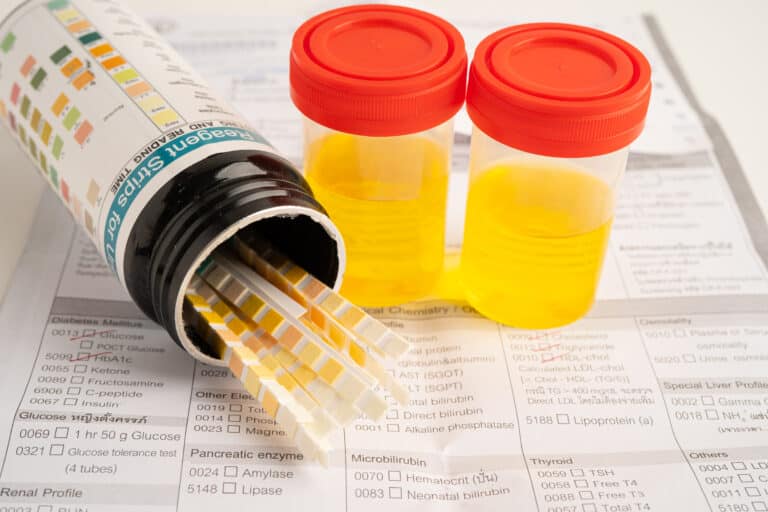Borderline Personality Disorder (BPD) affects about 1.8 percent of the US population.
It can cause turmoil due to changing emotions if you or a loved one has the disorder.
Unsure if you or your loved one has BPD? There are key Borderline Personality Disorder (BPD) traits medical professionals use towards a diagnosis.
Borderline Personality Disorder
Borderline Personality Disorder (BPD) is a severe mental disorder. It affects life, relationships, and emotions. It is also referred to as Emotionally Unstable Personality Disorder (EUPD).
BPD usually appears in adolescence or early adulthood. Stress or experiencing a distressing incident can provoke the symptoms of BPD.
Depression and anxiety are common in people living with Borderline Personality Disorder (BPD). They become overcome by their moods and emotions. Diagnosis of an eating disorder or Post Traumatic Stress Disorder (PTSD) may occur.
They may use coping tools like self-harm, drugs, or alcohol.
Signs of Borderline Personality Disorder
Here are the symptoms that a person may have. Not everyone will have all the symptoms.
- Impulsiveness – They may go on spending sprees or engage in risky behavior
- Self-image – Changing emotions in how they feel about themselves
- Prone to self-harm such as cutting or burning
- Difficulty controlling emotions seen as anger and anxiety
- Dissociation – The feeling of disconnection from the body or the world
- Feeling empty – Something is missing or having a void inside you
- Intense relationships – frequent conflicts and fights
- Paranoid or depressed
- Identity Confusion – no sense of who you are.
- Hearing voices or noises when stressed
Causes
They do not know what causes BPD. It’s believed to be a combination of factors.
- Genetics – No evidence of a gene that causes BPD. If an immediate family member has it, then you may be more prone
- Brain – changes in the brain that cause emotion regulation and impulse control. They may have different serotonin levels.
- Environmental – abuse, long-term distress by a child, neglect
Borderline Personality Disorder (BPD) Traits
Borderline Personality Disorder (BPD) has key traits used to diagnose the patient. At least 5 of the traits are needed for a diagnosis of BPD.
1. Fear of Abandonment
They will have an extreme reaction to the fear of abandonment, and it will cause a great deal of anxiety. This fear may cause them to
- Push people away. Reject them before they get rejected. Break up with them before they do you
- Verbal or physically abusive
- Make threats about self-harm or suicide
- Call or text a lot when loved ones are late
Simple things can trigger this fear of anxiety, panic, and isolation. They have very real fears.
2. Feelings of Emptiness
You may feel emptiness, like a hole you try to fill inside you. You may feel as though you’re fake and look for things to fill that void.
3. Impulsive Behavior
Those feelings of emptiness can lead to impulse control. Signs are overspending, substance abuse, sex with many different partners, and overeating.
4. Identity Confusion
People with Borderline Personality Disorder (BPD) are not sure who they are. May have problems with self-esteem. They look to others to see who they should be.
5. Unstable Emotions and Anger
BPD patients have severe mood swings. They can go from happy to sad and back again. They can become anxious quickly. Their emotion doesn’t always reflect the actual environment around them.
The anger or rage can come out of nowhere and is often illogical.
6. Paranoia and Dissociation
People living with BPD can suffer paranoia and dissociation when stressed. They have illogical mistrust of people and things around them.
They may even experience dissociation, feeling disconnected from one’s body or the world around them.
Memory issues can occur during this time. People may forget things or remember a different version of something that happened.
7. Self-harm and Suicidal Threats
Seventy-five percent of individuals living with Borderline Personality Disorder (BPD) have attempted suicide.
They may also engage in self-harm, such as cutting or burning themselves. The physical pain acts as a disturbance for the emotional pain.
People with BPD may have no intention of self-harm or suicide, but they may make their loved ones believe it. This is a way to get attention and control the situation.
Diagnosis and Treatment
Borderline Personality Disorder (BPD) affects both men and women equally. Women are diagnosed more than men. Men are often misdiagnosed with Post Traumatic Stress Disorder.
Diagnosis
To receive a diagnosis, a healthcare provider will examine the patient’s symptoms and medical history and perform an exam to rule out any physical illnesses.
If your physician suspects a BPD diagnosis, they may refer you to mental health services. You may see a psychiatrist and get an official diagnosis.
The Diagnostic and Statistical Manual of Mental Disorders helps diagnose your illness.
You will receive a diagnosis of Borderline Personality Disorder (BPD) if you meet at least 5 of the BPD traits.
Treatment
Several forms of treatment are in use to treat Borderline Personality Disorder (BPD).
- Psychotherapy or “Talk” therapy – Both group and individual have been shown to be helpful
- Dialectal Behavioral Therapy (DBT) – teaches people to cope with stress and be in the moment
- Mentalization-Based Therapy (MBT) -Teaches how to separate one’s thoughts and feelings. You’ll distinguish between your feelings and someone else’s
- Cognitive Behavioral Therapy (CBT) -teaches how to program your mind to think differently
- Medications – These are used to target symptoms. So, the medication varies depending on the patient.
Seek Treatment
Do you or a loved one have Borderline Personality Disorder (BPD) traits?
Please Contact a reputable mental health service today.
There are treatments available to help you take control again. If you have a feeling of suicide, please get in touch with the suicide prevention line. Or call 911 immediately.






